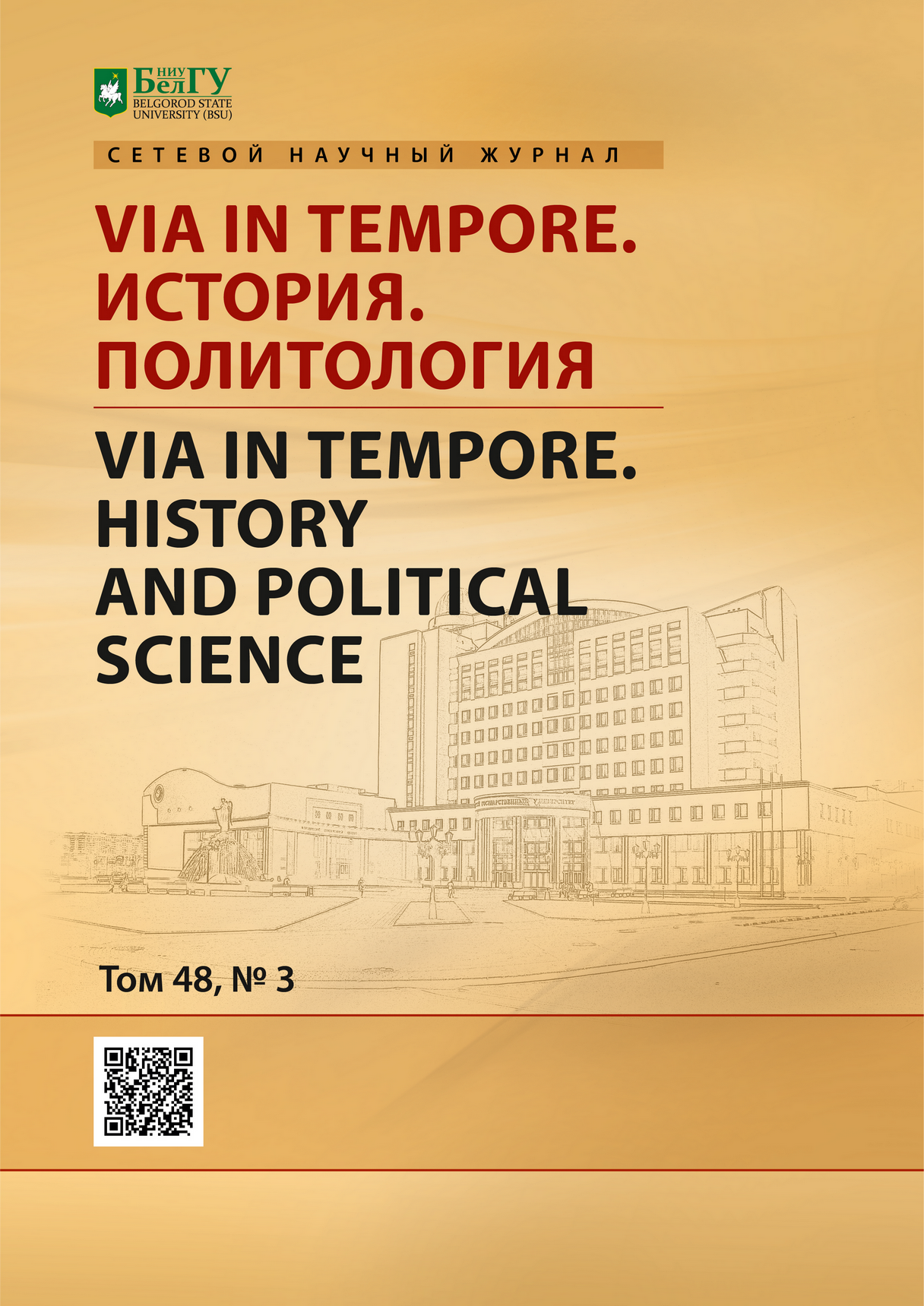The cult of Antinous during the reign of Hadrian
DOI:
https://doi.org/10.52575/2687-0967-2021-48-3-546=553Keywords:
Antinous, Hadrian, cult, religion, RomeAbstract
The article deals with aspects of the life of Antinous, the favorite of the Emperor Hadrian, and the further formation of a religious cult after his death. The author analyzes, indirectly through foreign literature, the complex of written and material sources, on the basis of which it is possible to reconstruct the biography of Antinous. It is argued that the cult of Antinous was a unique phenomenon of its time, since for the first time it was not the emperor or members of his family who were deified, but a lover from the retinue of the princeps. Also, the study raises questions about the influence of Egyptian and Greek mythology on the construction of the image of the object of worship. The question is raised to what extent the cult was necessary for society, how different groups of the population of the Roman Empire reacted to its emergence. The reasons for the religious design of Hadrian, the problem of the death of Antinous, the consequences of the emperor's policy in this area and the fate of the cult after the reign of Hadrian are established.
Downloads
References
Качан С.А. 2019. О некоторых особенностях почитания Антиноя в Римском Египте. Проблемы истории, филологии, культуры. 3 (65): 131–149.
Князький И.Е. 2020. Адриан. М., Молодая гвардия, 338.
Лебедев П.Н. 2018. Культ Антиноя в греко-римской и раннехристианской литературе. Вестник РГГУ. Серия: Литературоведение. Языкознание. Культурология. 10–2 (43): 182–193.
Циркин Ю.Б. 2018. Политическая история Римской империи. Т. 1. СПб., РГПУ, 464.
Backe A. 2005. Antinoos. Geliebter und Gott. Staatliche Museen zu Berlin, Stiftung Preußischer Kulturbesitz, Berlin, 47.
Bengtson H. 1995. Römische Geschichte. Republik und Kaiserzeit bis 284 n. Chr. München, Verlag, 570.
Birley A.R. 2000. Hadrian. The Restless Emperor. London, Routledge, 399.
Boer W. D 1955. Religion and Literature in Hadrian's Policy. Mnemosyne. Fourth Series, Vol. 8, Fasc. 2: 123–144.
Calandra E. 2019. La nascita dell’immaginariocultuale di Antinoo. ARYS Antigüedad Religiones y Sociedades: 239–265.
Everitt A. 2009. Hadrian and the Triumph of Rome. New York, Ed., 458.
Kulikowski M. 2016. Imperial Triumph. The Roman World from Hadrian to Constantine. London, Routledge, 328.
Németh G. 2012. The Corpse Daemon Antinoos. Archiv für Religionsgeschichte, 145–153.
Royston L. 1984. Beloved and God: The Story of Hadrian and Antinous. George Weidenfeld & Nicolson, 298.
Skinner M 2013. Sexuality in Greek and Roman Culture. Ancient Cultures (2nd ed.). Wiley-Blackwell, 464.
Vittozzi G.C. 2018. Emperor Hadrian and Egypt. Remarks on the mythical and religious perspectives. Italian Archaeological Centre, Cairo: 267–288.
Vout C. 2007. Power and Eroticism in Imperial Rome. Cambridge, University Press, 285.
Weber W. 1907. Untersuchungen zur Geschichte des Kaisers Hadrianus. Leipzig, B. G. Teubner, 288.
Williams C.A. 1999. Roman homosexuality: Ideologies of Masculinity in Classical Antiquity. Oxford, University Press, 420.
Woolf G. 2018. Fragments of an emperor’s religious policy: The case of Hadrian. Institute of Classical Studies, University of London: 47–61.
Zahrnt M. 1997. Hadrian in: Manfred Clauss: Die römischen Kaiser. 55 historische Portraits von Caesar bis Iustinian. München, C. H. Beck, 501.
Abstract views: 1301
Share
Published
How to Cite
Issue
Section
Copyright (c) 2021 Via in tempore. History and political science

This work is licensed under a Creative Commons Attribution 4.0 International License.


